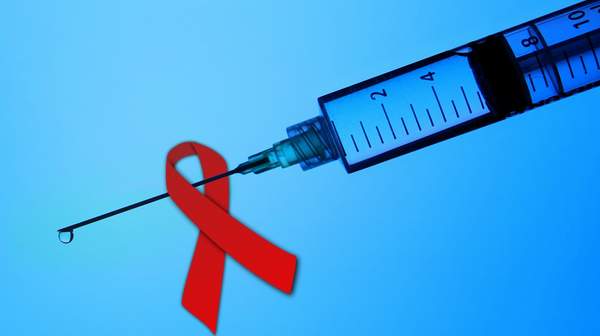What's in this article?
There is no cure for HIV and AIDS yet. However, treatment can control HIV and enable people to live a long and healthy life.
If you think you’re at risk of HIV, it’s important to get tested to find out your HIV status. Testing is the only way to know if you have the virus.
If you have already been for a test and your result came back positive, you will be advised to start treatment. Treatment is the best way to stay healthy until there is a cure, but you must take it every day.
Where HIV Hides
Usually, babies who might be HIV positive get medications to prevent the virus. Only when two tests come back positive are they switched to drugs that treat HIV. By this time, a baby could be 2 or more weeks old.
Sometimes doctors take a different approach, though. A baby from Mississippi received treatment medications just 30 hours after birth, and another baby from California was treated when she was only 4 hours old.
The baby in California is still HIV-negative almost a year after birth. The Mississippi baby tested HIV-free for more than 2 years, but is now HIV-positive again. Her mother had stopped giving her medication when the baby was 18-months old.
Scientists hoped giving strong treatment medications so soon after birth would get rid of HIV hiding in the body, or prevent it from forming.
But the news isn’t completely unexpected, says Robert Siliciano, MD, PhD, professor of medicine in the infectious diseases department at Johns Hopkins University School of Medicine.
He says it supports the theory that HIV cells stay in the body, just out of view in a hidden “reservoir.”
“Curing HIV infection is going to require strategies to eliminate this reservoir,” says Siliciano.
HIV/AIDS expert Anthony Fauci, MD, executive director of the National Institute of Allergy and Infectious Diseases (NIAID), calls the news disappointing “for the patient, the patient’s family, and the researchers.” But he says what they learned will help HIV/AIDS research. “I certainly don’t think it’s an advance, but I don’t think it’s a setback,” he says.
Why is HIV so hard to cure?
HIV infects a kind of white blood cell called a CD4 lymphocyte, a key player in the immune response. What makes HIV so sneaky is that it infects the very cells that are supposed to rub out viral infections.
HIV replicates in CD4 cells when they are activated — that is, when they are triggered by an infection. But some HIV-infected cells become inactive before the virus replicates. They go into a resting mode — and the HIV inside them becomes dormant until the cell is activated.
HIV drugs don’t affect HIV hiding in resting cells. These cells represent a hidden reservoir of HIV. When treatment stops, the resting cells eventually become active. The HIV inside them replicates and quickly spreads. That’s why current HIV treatments don’t cure HIV.
Treating HIV
There is no cure for HIV, but there are treatments to enable most people with the virus to live a long and healthy life.
Emergency HIV drugs
If you think you have been exposed to the virus within the last 72 hours (three days), anti-HIV medication may stop you becoming infected.
For it to be effective, the medication, called post-exposure prophylaxis or PEP, must be started within 72 hours of coming into contact with the virus. It is only recommended following higher risk exposure, particularly where the sexual partner is known to be positive.
The quicker PEP is started the better, ideally within hours of coming into contact with HIV. The longer the wait, the less chance of it being effective.
PEP has been misleadingly popularised as a “morning-after pill” for HIV – a reference to the emergency pill women can take to prevent getting pregnant after having unprotected sex.
But the description is not accurate. PEP is a month-long treatment, which may have serious side effects and is not guaranteed to work. The treatment involves taking the same drugs prescribed to people who have tested positive for HIV.
You should be able to get PEP from:
- sexual health clinics, or genitourinary medicine (GUM) clinics
- hospitals – usually accident and emergency (A&E) departments
If you already have HIV, try your HIV clinic if the PEP is for someone you’ve had sex with.
Earlier Treatment
People who have HIV should get treated as soon as they know. Now that may mean even earlier.
If you test positive
If you are diagnosed with HIV, you will have regular blood tests to monitor the progress of the HIV infection before starting treatment.
This involves monitoring the amount of virus in your blood (viral blood test) and the effect HIV is having on your immune system. This is determined by measuring your levels of CD4+ve lymphocyte cells in your blood. These cells are important for fighting infection.
Treatment is usually recommended to begin when your CD4 cell count falls towards 350 or below, whether or not you have any symptoms. In some people with other medical conditions, treatment may be started at higher CD4 cell counts. When to start treatment should be discussed with your doctor.
The aim of the treatment is to reduce the level of HIV in the blood, allow the immune system to repair itself and prevent any HIV-related illnesses.
If you are on HIV treatment, the level of the virus in your blood is generally very low and it is unlikely that you will pass HIV on to someone else.
Pregnancy
ARV treatment is available to prevent a pregnant woman from passing HIV to her child.
Without treatment, there is a one in four chance your baby will become infected with HIV. With treatment, the risk is less than one in 100.
Advances in treatment mean there is no increased risk of passing the virus to your baby with a normal delivery. However, for some women, a caesarean section may still be recommended.
If you have HIV, do not breastfeed your baby because the virus can be transmitted through breast milk.
If you or your partner has HIV, speak to an HIV doctor as there are options for safely conceiving a child without putting either of you at risk of infection.





